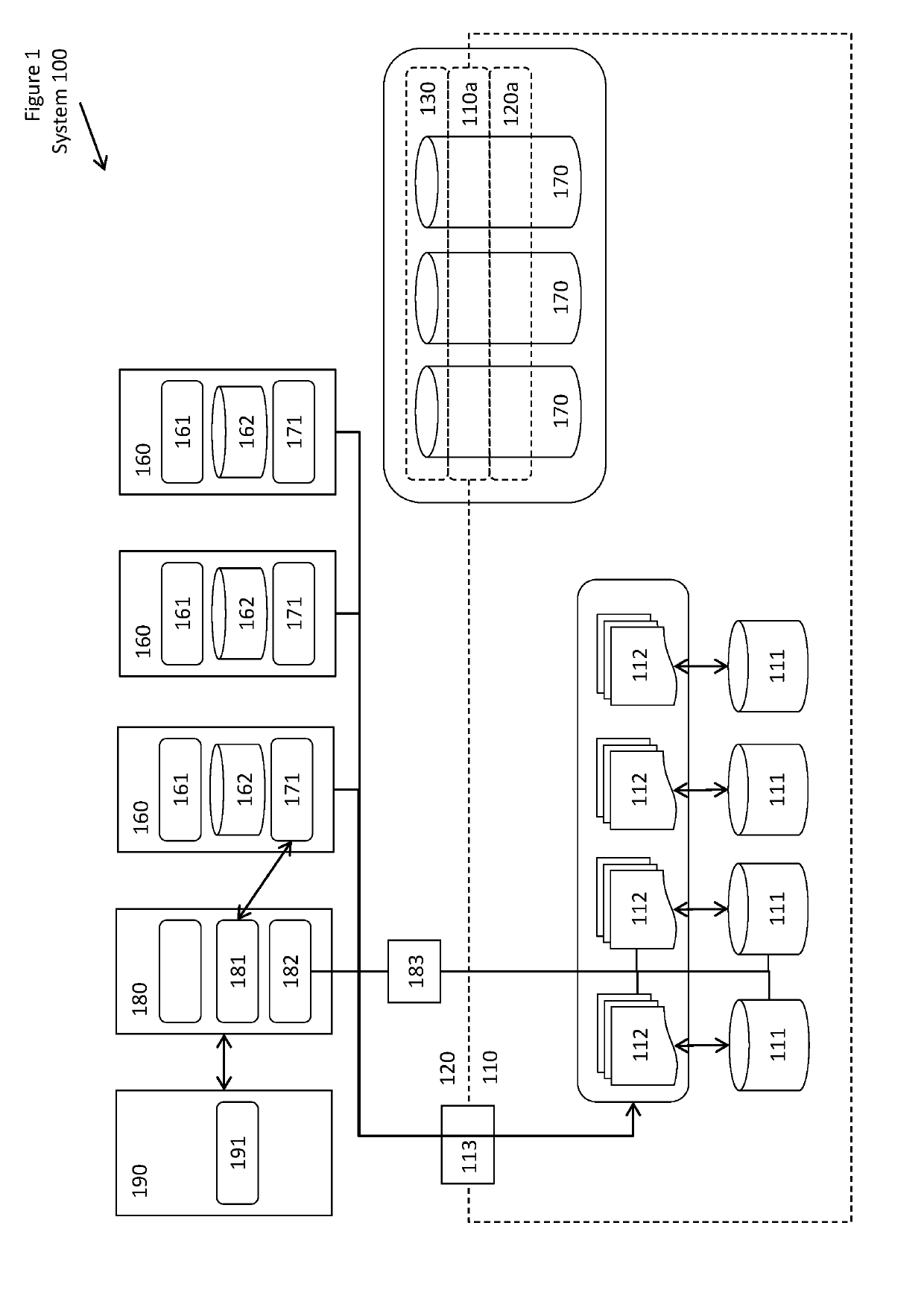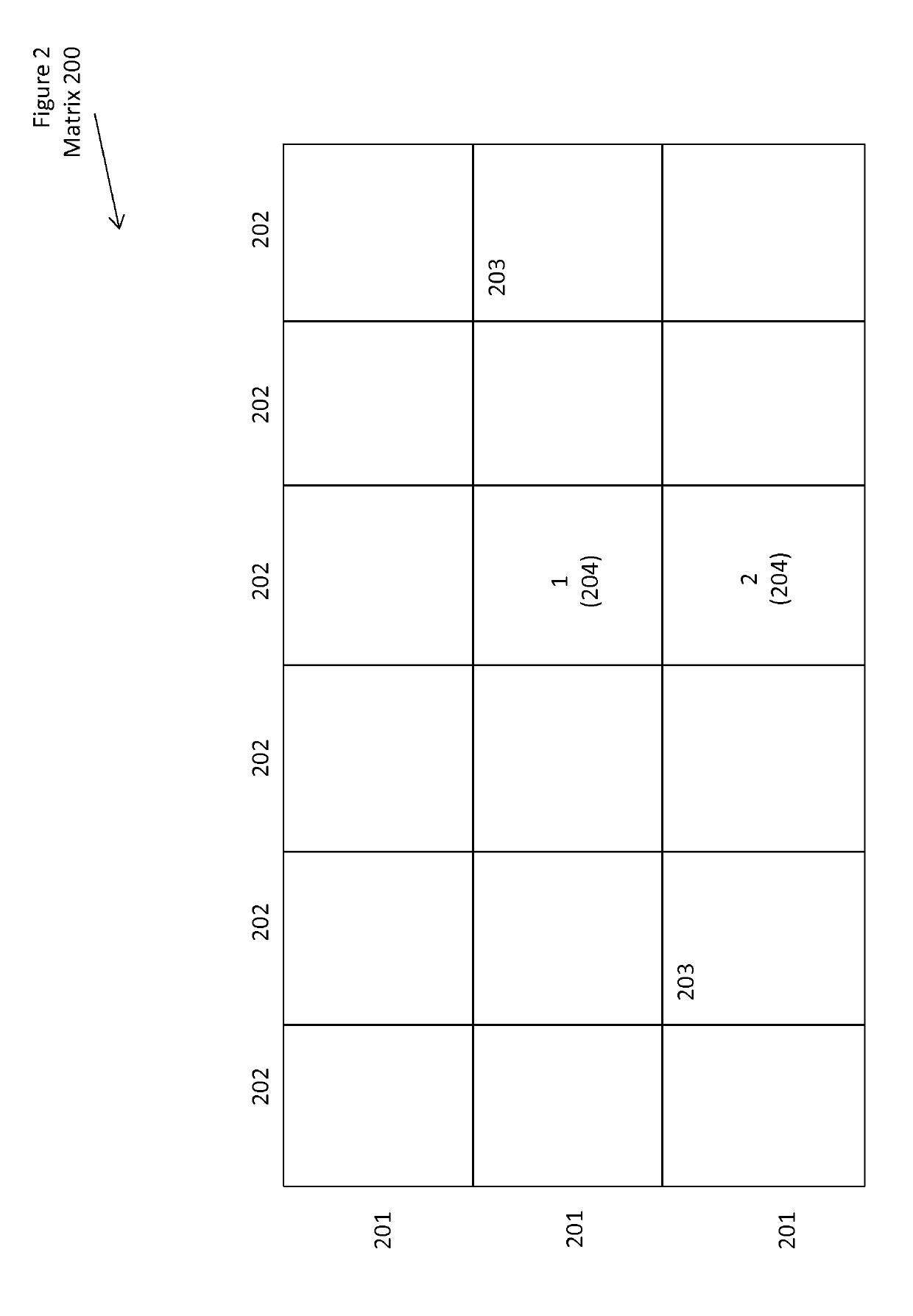Virtual devices in a reliable distributed computing system
- Summary
- Abstract
- Description
- Claims
- Application Information
AI Technical Summary
Benefits of technology
Problems solved by technology
Method used
Image
Examples
Embodiment Construction
Terms and Phrases
[0037]The following definitions are intended to be exemplary and illustrative, not necessarily limiting:
[0038]The phrase “real storage device”, the term “RSD”, and variants thereof, generally refer to any physical device with which the computer system can communicate.
[0039]The phrase “virtual storage device”, the term “VSD”, and variants thereof, generally refer to any virtual device whose capabilities are emulated by a host operating system or virtual machine.
FIGURES AND TEXT
[0040]FIG. 1 shows a conceptual drawing of a system.
[0041]FIG. 2 shows a conceptual drawing of a failure matrix.
SYSTEM OVERVIEW
[0042]FIG. 1 shows a conceptual drawing of a system.
[0043]A system 100 includes elements described herein, other elements shown in the figure, and possibly other elements. In one embodiment, the system 100 includes two or more redundant nodes; however, the figure only shows one of those nodes. This one of multiple nodes is also in communication with those other nodes, w...
PUM
 Login to View More
Login to View More Abstract
Description
Claims
Application Information
 Login to View More
Login to View More - R&D
- Intellectual Property
- Life Sciences
- Materials
- Tech Scout
- Unparalleled Data Quality
- Higher Quality Content
- 60% Fewer Hallucinations
Browse by: Latest US Patents, China's latest patents, Technical Efficacy Thesaurus, Application Domain, Technology Topic, Popular Technical Reports.
© 2025 PatSnap. All rights reserved.Legal|Privacy policy|Modern Slavery Act Transparency Statement|Sitemap|About US| Contact US: help@patsnap.com


